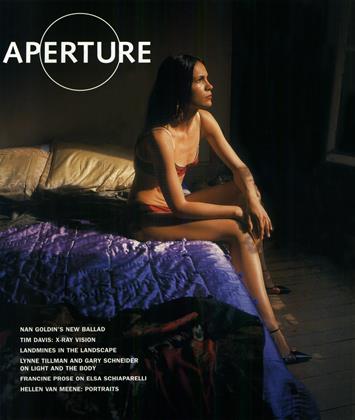CONTROL SCREENING
PHOTOGRAPHER'S PROJECT
TIM DAVIS
The classicists who write photography textbooks dutifully translate photography from the Greek as “light writing.” It was Cervantes who said: “Translation is the back side of a tapestry,” and in the case of photography's many translators, most have been staring at the wall. In photographic language, light is read as grammar; as an aesthetic tool, helping the artist describe an apprehended visual world. I am pursuing a visual world where light is syntactic; light veering close to content. In all my work light is cultural and political. It is put there by someone for a purpose: to invite citizens to share their money with corporations, to keep workers working, to describe democracy, to allow paintings in museums to be seen in one particular way.
In my series “lllilluminations,” I am photographing grand and gorgeous failures of light to sync up to its supposed functions: Braille billboards, damaging elaborate shadows behind museum sculptures, spring pear blossoms arc-lit into oblivion. The pictures in these pages are shot from the displays of airport screening machines. Everyone Western is familiar with these precautionary images; with their surgical invasiveness and inevitable beauty. In the taupe humdrum of airport travel, they stand out like the illuminated capitals of medieval manuscripts. Searching for different densities of material, the screens display images that look amazingly like charcoal drawings. That articulation—a governmentsanctioned security measure, creating charcoal drawings made entirely of light—is as complex a nesting of beauty and irony as I as an artist have handled. It represents a reason, I believe, to use photography. These images make me feel I have seen—and, better, understood—the light.©
Tim Davis
 View Full Issue
View Full Issue
More From This Issue
-
 Profile
ProfileNan Goldin — Dark Diary
Fall 2004 By Phyllis Thompson Reid -
 Work In Progress
Work In ProgressHellen Van Meene Portraits
Fall 2004 By Andrew Hiller -
 Dialogue
DialogueCounting Light
Fall 2004 By Lynne Tillman -
 Witness
WitnessBlind Killers Landmines In The Landscape
Fall 2004 By Judy Grayson -
 Mixing The Media
Mixing The MediaElsa Schiaparelli Le Shocking!
Fall 2004 By Francine Prose -
 Notes
NotesNotes
Fall 2004
Subscribers can unlock every article Aperture has ever published Subscribe Now
Tim Davis
Photographer's Project
-
 Photographer's Project
Photographer's ProjectPhillip Toledano: Phonesex
Winter 2008 -
 Photographer's Project
Photographer's ProjectMike Mandel: The Baseball-Photographer Trading Cards
Fall 2010 By Aaron Schuman -
 Photographer's Project
Photographer's ProjectThe Costume Of The Soul
Winter 2001 By Carole Naggar -
 Photographer's Project
Photographer's ProjectStill Life
Summer 2001 By Miguel Rio Branco -
 Photographer's Project
Photographer's ProjectLise Sarfati She
Spring 2009 By Sandra S. Phillips -
 Photographer's Project
Photographer's ProjectLavina
Spring 2011 By The Editors









